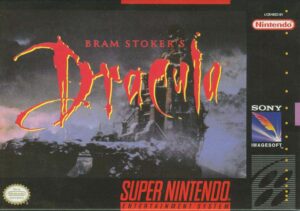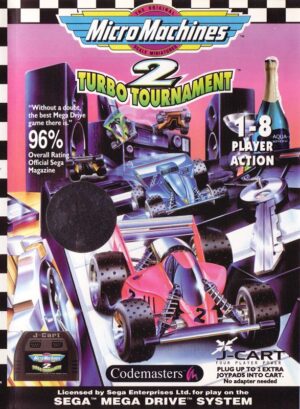Retro Replay Review
Gameplay
Family Feud’s gameplay shines by faithfully replicating the fast-paced excitement of the TV show while adding meaningful video game twists. At its core, you’ll face off against another family (controlled by AI or a local player) in a series of rounds, answering survey questions by spelling out the most popular responses. With over 4,000 questions onboard, the developers have provided a deep well of material to keep sessions fresh and unpredictable.
The control scheme is intuitive: you move a cursor with the D-pad and press a button to select individual letters as you spell your answer. This mechanic adds a layer of skill and timing that reflects the on-air pressure contestants experience when buzzing in on the show. The “Three Strikes” rule is in full effect, meaning you must think quickly and accurately or give your opponents a chance to steal your points.
One standout feature is the inclusion of the “Bulls Eye Round,” which was relatively new to the TV show at the time of this game’s release. In this bonus segment, you wager points before seeing the question, creating tense strategic moments where you must balance risk and reward. This round can swing the outcome of a match dramatically, ensuring no contest feels predetermined.
Beyond head-to-head play, you can customize your family’s appearance, background, and even personal traits like hobbies and occupations. These choices don’t just change looks—they subtly influence how your family performs under pressure. Additionally, customizable rule sets allow you to tweak the target score, the number of strikes allowed, or disable certain rounds for a quick match.
Graphics
Visually, Family Feud captures the essence of the TV studio with bright colors, polished character models, and lively stage lighting. The host avatar emulates the look and mannerisms of the series presenter, complete with animated gestures and facial expressions that react to your performance. This attention to detail makes you feel like you’re stepping under the big studio lights.
Character customization options go beyond simple clothing swaps. You can adjust facial features, body types, and even posture, which gives each playable family a distinct personality. During gameplay, camera angles shift dynamically—zooming in on your family as you nail a top answer, or panning to your opponents when they steal a question.
The survey board and answer reveal animations are crisp and smooth, with large, legible fonts that never obstruct your view. Subtle ambient effects, such as lens flares on the stage lights or shadows cast by the podiums, add an extra layer of polish. The overall presentation feels modern and engaging, even if you’ve grown up watching older versions of the show.
Though there’s no fully rendered pre-rendered cutscene or narrative sequence, the transitions between rounds and the celebratory graphics for big wins are enough to build excitement. Some may wish for more cinematic flair, but within the context of a quiz game, the visuals remain focused and purposeful.
Story
As a game based on a long-running quiz show, Family Feud doesn’t follow a traditional story arc with protagonists or plot twists. Instead, its “narrative” is driven by the natural progression of competitions: you start with introductory rounds, build momentum through regular play, and then clash in high-stakes Bulls Eye Rounds or sudden-death tie-breakers. This structure evokes the tension and triumphs you’d expect from actual episodes.
Customization options let you craft the backstory of your family, from naming your members to assigning them occupations and hobbies like gourmet cooking or extreme sports. While these elements don’t unlock special powers or hidden levels, they create a sense of connection. You’ll find yourself rooting more fervently for a family you’ve spent time fashioning rather than a generic opponent.
Periodic on-screen commentary—short quips from the digital host—and crowd cheer noises simulate the live audience atmosphere. The lack of a linear storyline may feel sparse to players craving narrative depth, but fans of trivia and multiplayer competition will appreciate the game’s focus on replayability and skill-based outcomes.
Ultimately, the story in Family Feud emerges organically from each match’s ebb and flow. Every time you play, you weave a small saga of underdog comebacks, near-misses, and triumphant steals that collectively form your personal champion’s journey.
Overall Experience
Family Feud offers an accessible yet engrossing package for both casual players and quiz aficionados. The wealth of survey questions ensures that you won’t exhaust the content quickly, and the adherence to show rules—including the Three Strikes mechanic and the Bulls Eye Round—keeps gameplay authentic. The ability to battle friends or AI with customizable families and rule sets adds considerable replay value.
While the visuals and audio faithfully recreate the game show ambiance, it’s the refined controls and strategic wagering that elevate the experience. Spelling answers letter-by-letter may feel unusual at first, but it gradually becomes second nature, and those who master rapid, accurate plays will find themselves climbing the leaderboards in no time.
For anyone seeking a fun, family-friendly party game, this version of Family Feud is an ideal choice. Solo players can sharpen their skills against AI opponents of varying difficulty levels, while groups can enjoy hours of competitive fun. Minor limitations—such as the absence of a deep storyline or online multiplayer—are outweighed by the game’s core strengths.
In conclusion, Family Feud succeeds at delivering the theatrics and challenge of its televised counterpart in an interactive format. With extensive customization, robust content, and faithful presentation, it stands as one of the best video game adaptations of a beloved quiz show. Whether you’re playing with family at home or hosting a trivia night with friends, you’re in for a lively, engaging time under the spotlights.
 Retro Replay Retro Replay gaming reviews, news, emulation, geek stuff and more!
Retro Replay Retro Replay gaming reviews, news, emulation, geek stuff and more!









Reviews
There are no reviews yet.